The Impact of GS1 QR Codes in the Supply Chain
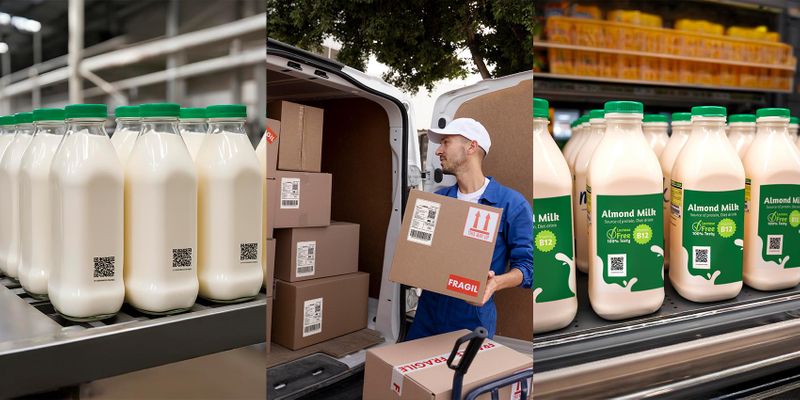
QR codes were originally created for tracking. They were designed as an improvement over traditional barcodes, offering faster scans and greater data capacity.
Today, most people know QR codes as shortcuts to websites, restaurant menus, or payment portals. But the story has come full circle. These square codes have returned to their industrial roots, but only this time have they upgraded how product and package information is shared across industries.
Leading manufacturers, distributors, and retailers are now piloting the use of GS1 Digital Link QR codes in the supply chain. These trials highlight the potential benefits for product traceability, logistics efficiency, and customer engagement.
Table of Contents
What is a GS1 Digital Link QR code?
A common misconception is that QR codes are different from barcodes. In truth, they are barcodes, just a two-dimensional version of the familiar black-and-white stripes scanned at checkout. The difference lies in how much data they can hold and how it is structured.
The GS1 Digital Link is a global standard developed by GS1, the organization behind the original UPC barcode. It turns a QR code into more than a marketing tool.
Encoding data into a structured web address (URI) ensures that information is universal and consistent across industries. This standardization was the missing piece that QR codes lacked for serious operational use.
Inside the URI, information is organized using numbers called GS1 Application Identifiers (AIs). Think of these as “tags” that explain what each piece of data means. For example, (01) signals a product’s Global Trade Item Number (GTIN), another a lot number, another an expiration date, and so on.
These identifiers make the data machine-readable and interoperable, meaning it can be interpreted the same way no matter where it’s scanned. A warehouse in the US, a retail store in the UK, or a distribution hub in Asia will all understand the data consistently.
Since the URI is essentially a web address, it can link to different types of content. This can be done dynamically or, in cases where a resolver is in use, through automated routing.
A resolver acts like a traffic controller, directing the same code to different destinations depending on the user or system. For example, a consumer scan may lead to product instructions or a recipe, while a logistics system scanning the same code may pull up batch data, expiration dates, or compliance details.
When that URI is encoded into a QR code, you now have a GS1 Digital Link QR code or, a QR code powered by GS1.
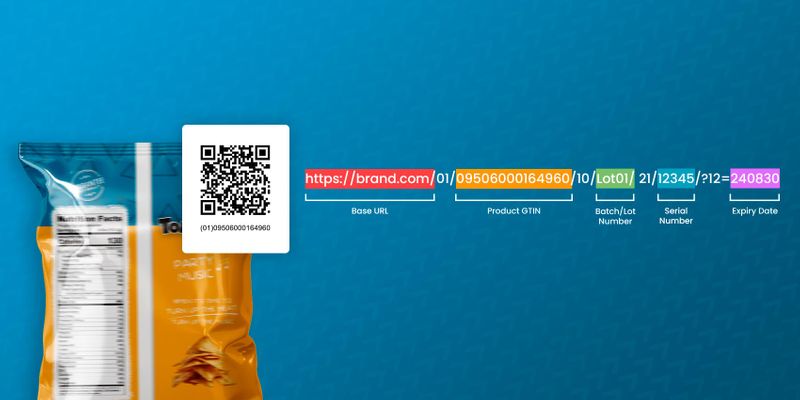
Use case: GS1 QR codes in product packaging
One of these QR codes' most visible applications is consumer packaging. This shift is being driven by GS1 Sunrise 2027, a global initiative. Its first milestone is straightforward: ensure retail point-of-sale (POS) systems can scan 2D barcodes (QR codes and Datamatrix) by 2027.This timeline gives manufacturers, retailers, and technology providers a shared target to update their scanners, software, and packaging processes without disruption.
So, what does the QR code on packaging actually hold? It encodes a structured URI containing multiple identifiers in one symbol. For example:
https://your.brand/01/09506000134352/10/ABC123/21/512378/17/261106
Breaking it down:
- 01 = GTIN (Global Trade Item Number – the product’s unique ID).
- 10 = Lot/Batch Number (groups items from the same production run).
- 21 = Serial Number (identifies one individual item).
- 17 = Expiration Date (the product’s shelf-life).
By fitting all this into one code, packaging becomes smarter and more functional.
Benefits
Granular inventory management – Lot, batch, and serial numbers make stock rotation and expiry tracking far more precise.
Faster and safer recalls – Problem products can be identified and removed without affecting entire product ranges.
Regulation compliance – Regulation-required data can be delivered through the same code, even across different markets.
Dynamic updates – The codes can point to updated instructions, new formulations, or recycling guidelines without needing new packaging runs.
Impact on Consumers
For shoppers, the same QR code is just as powerful. It delivers transparency, such as sourcing information, nutritional details, or sustainability practices. It supports authenticity checks to guard against counterfeits.
It also opens engagement channels, from promotions and loyalty programs to digital instructions or recipes.
In short, what was once a clutter of different barcodes and symbols on packaging is converging into a single QR code that works for both businesses and consumers.
TL;DR: On packaging, GS1 QR codes combine multiple identifiers into one symbol, enabling better inventory management, regulatory compliance, recalls, consumer engagement, and, most importantly, work in POS.
Use case: GS1 QR Codes in logistics & distribution
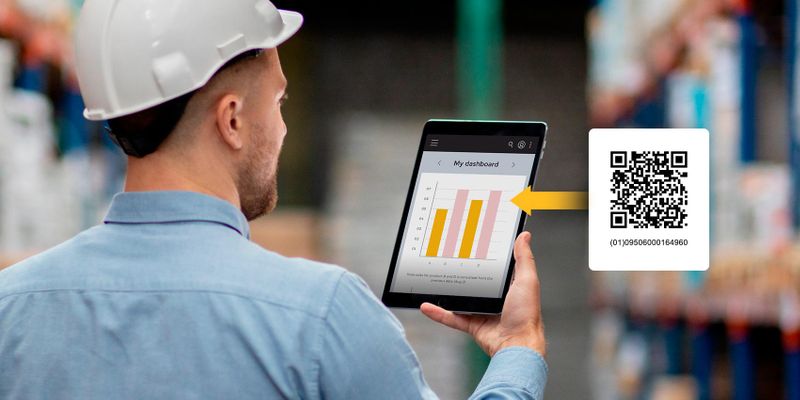
Beyond product packaging, these QR codes are also transforming how shipments are labeled and tracked. This is guided by the Scan4Transport(S4T) standard, which was developed to modernize logistics labels and make them compatible with today’s digital supply chains.
The standard was developed by a global work group that started its efforts in January 2019. The official "Encoding Transport Process Information GS1 Implementation Guideline" was ratified in December 2021.
At the core of this label is the SSCC (Serial Shipping Container Code), a unique identifier that tracks cartons, pallets, or full shipments. Under Scan4Transport, labels typically include both a GS1-128 barcode and a 2D barcode.
The GS1-128 provides compatibility with existing systems, while the QR code delivers richer data in a compact format. This redundancy ensures that all partners, whether fully upgraded or not, can read the shipment.
Here’s an example of how shipping information can be structured inside a GS1 Digital Link URI:
https://logistics.example/00/123456789012345678/?4300=Acme+Distribution
&4302=200+Industrial+Park+Rd&4305=Chicago&420=60601&4324=202509101030
Breaking it down:
- 00 = SSCC → 123456789012345678 (unique shipment identifier).
- 4300 = Ship-to Company Name → Acme Distribution.
- 4302 = Street Address → 200 Industrial Park Rd.
- 4305 = City → Chicago.
- 420 = Postal Code → 60601.
- 4324 = Delivery Time Instruction → 2025-09-10 10:30.
Benefits
Better sortation – Granular address data improves routing and distribution efficiency.
Offline visibility – Essential transport information can still be accessed without a network connection.
Industry-wide interoperability – Standardized labels ensure that different carriers, warehouses, and retailers worldwide interpret the data consistently.
Updated delivery information – Instructions such as delivery windows, handling notes, or required signatures can be carried in the QR code or linked through it.
In practice, this means fewer errors, faster handling, and a smoother flow of goods across the supply chain.
TL;DR: In logistics, GS1 QR codes work alongside GS1-128 labels to carry the SSCC and richer shipping data, enabling better sortation, offline access, interoperability, and updated delivery instructions.
The push for compliance
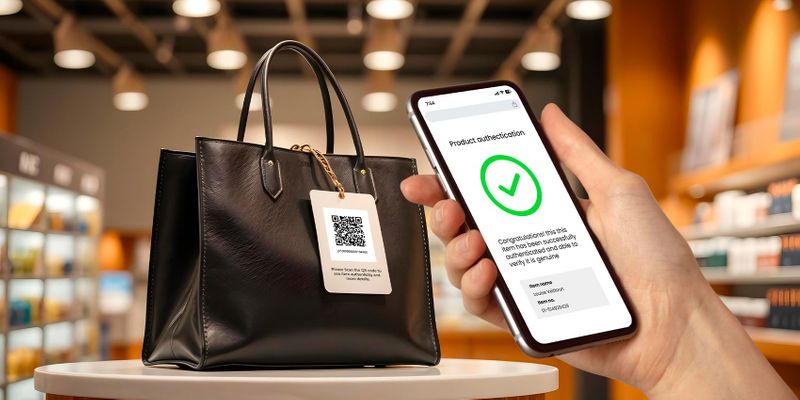
The push for 2D barcodes in the supply chain is being fueled by compliance and regulatory requirements worldwide. Governments and industries are mandating greater product traceability and transparency to safeguard consumer trust, safeguard public health, and ensure accountability.
Examples include:
Food safety: Under rules like the FDA’s Food Traceability Final Rule, manufacturers and distributors must capture and share detailed product movement data.
While the regulation focuses on food items, its implementation depends entirely on the logistics and distribution network. Without this, identifying contaminated batches or pinpointing co-shipped items would be impossible.
Logistics and distribution: Regulations and customer requirements increasingly demand visibility into shipping events, delivery updates, and proper documentation for customs or cross-border compliance.
In recall situations, detail is everything. If contamination affects a single batch, companies must identify not only the faulty product but also everything shipped alongside it. The QR codes make this possible by encoding granular identifiers into a machine-readable, standardized format.
Because it’s a global standard, the QR code helps companies meet varying country-specific requirements without reinventing data structures for each market. The same code can serve regulatory needs in the U.S., EU, or Asia while still supporting business efficiency.
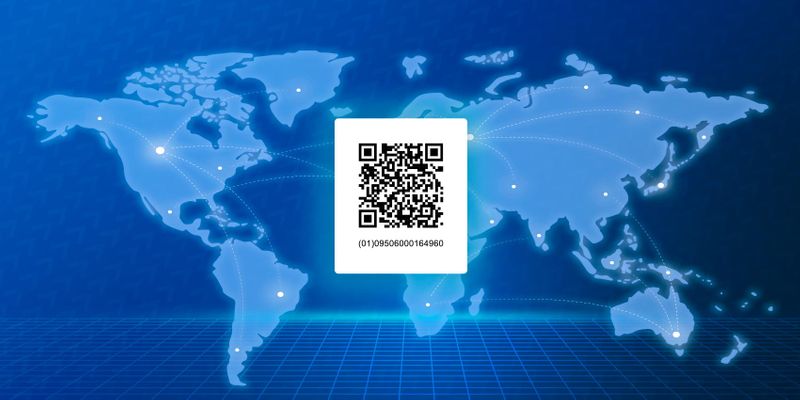
How to generate a GS1 Digital Link QR code
You don’t need to wait until Sunrise 2027 to start testing with GS1 Digital Link QR codes. Here’s a simple step-by-step way to create one for your products:
1. Pick the right product
Choose a product that would benefit most from upgrading its current 1D barcode (UPC/EAN) to a 2D code. Usually, this is a product where extra data adds real value.
2. Access a generator
Go to GS1’s official portal or a GS1-certified partner like QR Tiger. Register or log in to start.
3. Input the GTIN
Every product needs its Global Trade Item Number (GTIN) in a 14-digit format. If your product has:
- UPC (12 digits) → Add two leading zeros. Example: 00123456789012
- EAN- 13 (13 digits) → Add one leading zero. Example: 01234567890123
- EAN-8 (8 digits)→Add six leading zeros. Example: 00000012345678
4. Add more data
You can select from standard templates such as batch/lot number, serial number, and expiration date or manually add Application Identifiers with their values.
5. Choose the output
Decide where your QR points:
- A single website or file
- Or the recommended option: a customizable product page that allows dynamic updates and richer information.
6. Minor QR code customization
You may adjust the QR code’s color or design slightly. Keep changes minimal since too much customization can affect scannability or cause barcode verification issues.
7. Download your QR code
Download the QR code separately or together with its corresponding standard 1D barcode as individual files. Print both on the package to ensure scanning works across legacy and upgraded systems.
This keeps 1D compatibility during the transition. Once most retail stores support 2D scanning, you can choose either the 1D barcode or move forward with only the QR code.
What to expect moving forward
The shift toward GS1 QR codes in the supply chain is no longer a distant concept. With Sunrise 2027 setting the pace, industries are preparing for a future where packaging, logistics, and compliance all speak the same digital language.
Expect wider adoption first at the retail checkout, then across distribution and regulatory systems.
For businesses, the next step is clear: start testing and adapting now, while the standards are still being rolled out.
For consumers, it means more transparency and trust with every scan. The barcode has served well for decades, but its smarter successor is already on the horizon.
FAQs
My product already has a UPC barcode. Do I need to replace it?
Not always. A UPC barcode is still valid for retail and scanning at checkout. However, some industries—especially those under tighter regulation like healthcare, medical devices, or food may require more detailed information that can't be found in a standard barcode.
The best step is to check if your industry has specific labeling rules. If regulations apply, you may need to start planning on how to implement 2D barcodes for product identification.
How do GS1 QR codes help with product recalls?
They enable incredibly granular tracing. Instead of recalling an entire product line, a company can identify the exact problem using the data encoded in the QR code (e.g., GTIN, Lot Number, Serial Number). This allows them to recall only the affected batches, which is faster, safer, and far less costly.
Is a standard QR code the same as a GS1 QR code?
No. A regular QR code usually just stores a web link, either a direct URL or a shortened one that redirects. A GS1 QR code is different because it follows global standards. It carries structured data, like product ID, batch, or expiry date, that machines can read the same way everywhere.DISCLAIMER: We acknowledge that GS1, as well as the materials, proprietary items, and all related patents, copyright, trademark, and other intellectual property (collectively, “intellectual property”) relating to its use, are the property of GS1 Global, and that our use of the same shall be in accordance with the conditions provided by GS1 Global.




